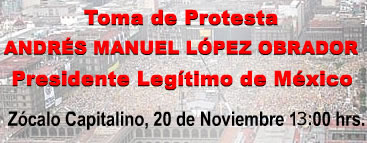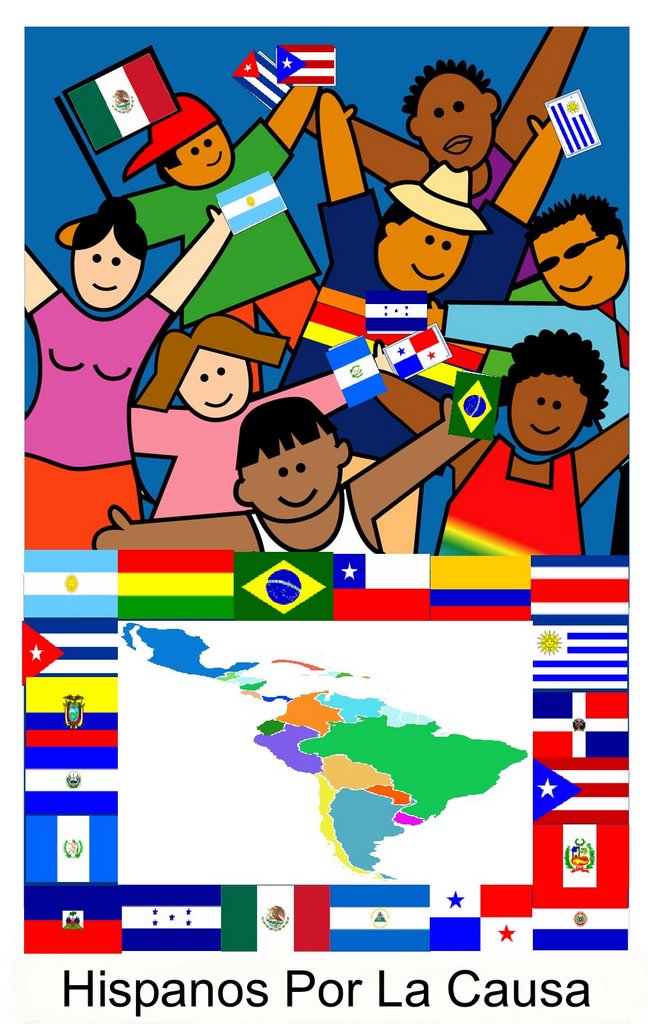En su reciente visita a Vietnam, el presidente Bush dijo que una de las lecciones que estados unidos obtuvo en esa guerra y que se extrapola a Irak, es: "...Tendremos exito, al menos que nos demos por vencidos...". Definitivamente, la historia no es un tema fuerte para el presidente, EEUU tuve exito, precisamente porque se considero victorioso en esa guerra y se salio. Olbermann le da una merecida leccion de historia a Bush.
martes, noviembre 21, 2006
ONU: 39.5 Millones de Personas Estan Infectadas con el VIH
GENEVA (AP) - The global HIV epidemic is growing, leaving an estimated 39.5 million people worldwide infected with the deadly virus, the United Nations said Tuesday.
AIDS has claimed 2.9 million lives this year and another 4.3 million people became infected with HIV, according to the U.N.'s AIDS epidemic update report, published on Tuesday. Spread of the disease was most noticeable in East Asia, Eastern Europe and Central Asia.
AIDS has killed more than 25 million people since the first case was reported in 1981, making it one of the most destructive illnesses in history.
"In a short quarter of a century AIDS has drastically changed our world," U.N. Secretary-General Kofi Annan said at a staff meeting Monday in Geneva. "AIDS, tuberculosis and malaria make up the deadliest triad the world has known."
But he said improvement in treatment, more resources and higher political commitment over the past 10 years gave rise to optimism.
The joint report by UNAIDS and the World Health Organization acknowledged that access to HIV/AIDS treatment has made a great leap forward in recent years, enabling many infected people to live longer. But it said much remained to be done, especially in prevention.
Sub-Saharan Africa - with 63 percent or 24.7 million of the world's infected people - bears the highest burden, but in East Asia, Eastern Europe and Central Asia there are 21 percent more people living with HIV than two years ago.
The virus spread fastest in Eastern Europe and Central Asia, with a nearly 70 percent increase in new infections over the past two years. In South and Southeast Asia, the number of new infections has grown by 15 percent since 2004, while it rose by 12 percent in North Africa and the Middle East. In Latin America, the Caribbean and North America it remained roughly stable.
All regions of the world have had an increase in the number of people living with the deadly virus over the past two years, the report said. In some countries this was due to better access to medicine keeping people alive longer.
Never before have so many women been infected with HIV. There are 17.7 million women worldwide carrying the virus, an increase of more than 1 million compared with two years earlier. The proportion of women among the infected is particularly striking in sub-Saharan Africa where they account for 59 percent of the people with HIV/AIDS.
The report doesn't break down the estimates country by country, but it said the United States - for which figures were available for 2005 only - had 1.2 million people living with HIV last year. The U.S. therefore ranks among the top 10 countries in terms of infected people.
Unprotected sex in prostitution and between men, as well as unsafe drug injecting represent the highest risks for HIV infection and the main reasons for the spread of the disease in Asia, Eastern Europe and Latin America, it said.
After sub-Saharan Africa, Asia is the second most infected region. Almost 8 million of the world's people with HIV/AIDS live in South and South East Asia. The report said there is increasing evidence for HIV outbreaks among men who have sex with each other in Cambodia, China, India, Nepal, Pakistan, Vietnam and Thailand, but it said few of these countries' AIDS programs really address the problem of sex between males.
In North America, an estimated 1.4 million people are infected, which represents a steady increase over the past few years mainly due to the life-prolonging impact of antiretrovirals.
In the United States, people from racial and ethnic minorities are more affected by the epidemic, with half of the AIDS diagnoses between 2001 and 2004 among African Americans and 20 percent among Hispanics.
But infected people in the U.S. have been benefiting from more effective treatment over the past few years, leading to a 21-percent increase of infected people surviving two years or longer since the early 1990s.
AIDS has claimed 2.9 million lives this year and another 4.3 million people became infected with HIV, according to the U.N.'s AIDS epidemic update report, published on Tuesday. Spread of the disease was most noticeable in East Asia, Eastern Europe and Central Asia.
AIDS has killed more than 25 million people since the first case was reported in 1981, making it one of the most destructive illnesses in history.
"In a short quarter of a century AIDS has drastically changed our world," U.N. Secretary-General Kofi Annan said at a staff meeting Monday in Geneva. "AIDS, tuberculosis and malaria make up the deadliest triad the world has known."
But he said improvement in treatment, more resources and higher political commitment over the past 10 years gave rise to optimism.
The joint report by UNAIDS and the World Health Organization acknowledged that access to HIV/AIDS treatment has made a great leap forward in recent years, enabling many infected people to live longer. But it said much remained to be done, especially in prevention.
Sub-Saharan Africa - with 63 percent or 24.7 million of the world's infected people - bears the highest burden, but in East Asia, Eastern Europe and Central Asia there are 21 percent more people living with HIV than two years ago.
The virus spread fastest in Eastern Europe and Central Asia, with a nearly 70 percent increase in new infections over the past two years. In South and Southeast Asia, the number of new infections has grown by 15 percent since 2004, while it rose by 12 percent in North Africa and the Middle East. In Latin America, the Caribbean and North America it remained roughly stable.
All regions of the world have had an increase in the number of people living with the deadly virus over the past two years, the report said. In some countries this was due to better access to medicine keeping people alive longer.
Never before have so many women been infected with HIV. There are 17.7 million women worldwide carrying the virus, an increase of more than 1 million compared with two years earlier. The proportion of women among the infected is particularly striking in sub-Saharan Africa where they account for 59 percent of the people with HIV/AIDS.
The report doesn't break down the estimates country by country, but it said the United States - for which figures were available for 2005 only - had 1.2 million people living with HIV last year. The U.S. therefore ranks among the top 10 countries in terms of infected people.
Unprotected sex in prostitution and between men, as well as unsafe drug injecting represent the highest risks for HIV infection and the main reasons for the spread of the disease in Asia, Eastern Europe and Latin America, it said.
After sub-Saharan Africa, Asia is the second most infected region. Almost 8 million of the world's people with HIV/AIDS live in South and South East Asia. The report said there is increasing evidence for HIV outbreaks among men who have sex with each other in Cambodia, China, India, Nepal, Pakistan, Vietnam and Thailand, but it said few of these countries' AIDS programs really address the problem of sex between males.
In North America, an estimated 1.4 million people are infected, which represents a steady increase over the past few years mainly due to the life-prolonging impact of antiretrovirals.
In the United States, people from racial and ethnic minorities are more affected by the epidemic, with half of the AIDS diagnoses between 2001 and 2004 among African Americans and 20 percent among Hispanics.
But infected people in the U.S. have been benefiting from more effective treatment over the past few years, leading to a 21-percent increase of infected people surviving two years or longer since the early 1990s.
Vientos Del Cambio En Mexico
Tomas de posesion com presidente legitimo de Mexico: Andres Manuel Lopez Obrador
lunes, noviembre 20, 2006
Desfile, 20 de Noviembre Dia De La Revolucion Mexicana
Desfile 20 de noviembre en la ciudad de mexico.
De Donde Vendran Los Recursos Economicos De AMLO?
Andres Manuel Lopez Obrador, presidente legitimo de Mexico apartir de hoy 20 de noviembre electo en la convencion nacional democratica y por millones de mexicanos. Quienes y como se le apoya a AMLO economicamente?
domingo, noviembre 19, 2006
No se Descarta El Uso Del Ejercito En La Toma de Protesta Presidencial en México.
Manuel Espino, dirigente nacional del PAN comenta sobre la relación entre el partido y la iglesia católica.
Primera Parte
El PRD agravia al mundo, el PRI agravia a México. Irónica e Hipócritamente el dirigente del PAN dice que el PRD usa el miedo como factor de convencimiento para los mexicanos. Dice: No pertenezco al Yunque.
Segunda Parte
Elba Esther Gordillo le ayuda a Calderón a llegar a la presidencia y Espino dice que el presidente electo no le debe nada a nadie. Aristegui: De cuando acá no se cobran los favores?
Tercera Parte
Primera Parte
El PRD agravia al mundo, el PRI agravia a México. Irónica e Hipócritamente el dirigente del PAN dice que el PRD usa el miedo como factor de convencimiento para los mexicanos. Dice: No pertenezco al Yunque.
Segunda Parte
Elba Esther Gordillo le ayuda a Calderón a llegar a la presidencia y Espino dice que el presidente electo no le debe nada a nadie. Aristegui: De cuando acá no se cobran los favores?
Tercera Parte
Suscribirse a:
Entradas (Atom)





